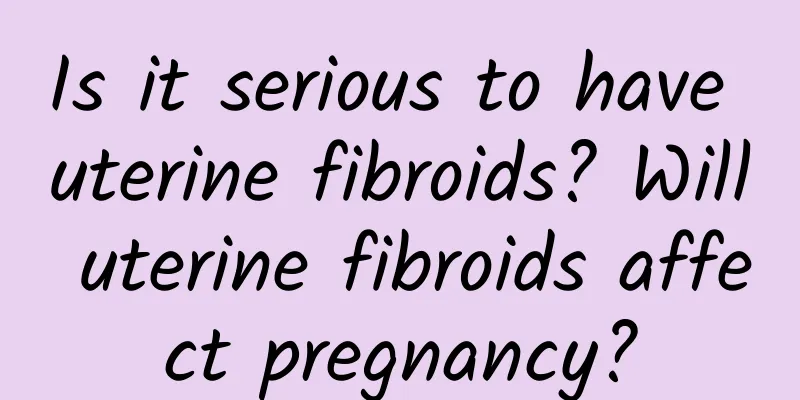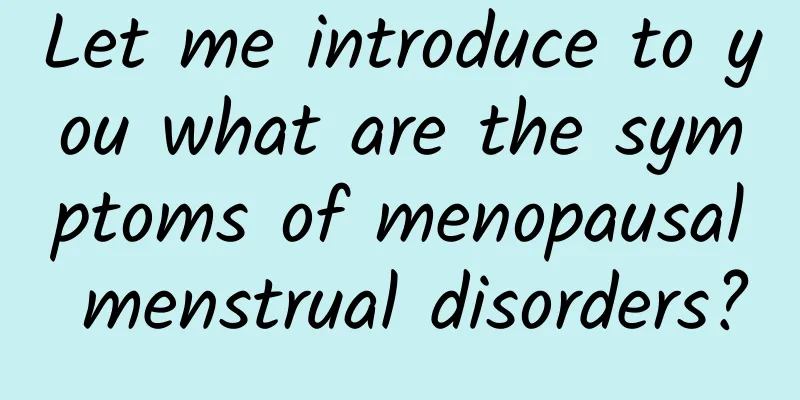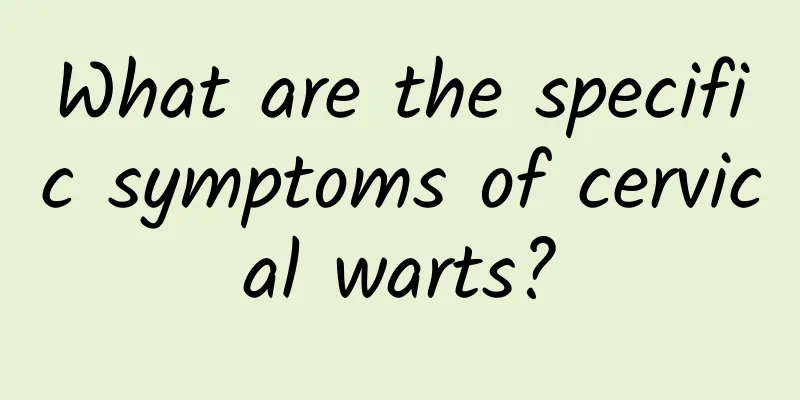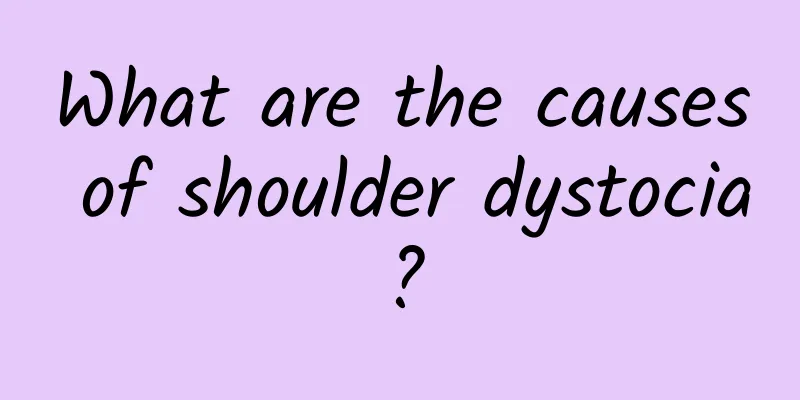Is it serious to have uterine fibroids? Will uterine fibroids affect pregnancy?

|
How serious are uterine fibroids? Uterine fibroids can affect pregnancy, and about 25%-40% of patients are infertile. This is related to the size and location of the fibroids. For example, uterine horn fibroids can cause the fallopian tubes to twist and deform, affecting sperm or fertilized eggs, and reducing the chance of conception. Not all uterine fibroids require treatment and surgery. Most of them only require follow-up. However, because uterine fibroids can grow, doctors still recommend treatment up to a certain size. So, how serious are uterine fibroids? If the fibroids grow too fast or after menopause, the fibroids will not shrink but grow larger. Generally speaking, fibroids larger than 5.0cm are more serious and need to be removed surgically in time. However, the specific treatment plan needs to be determined based on the individual's age, clinical manifestations and endocrine conditions. In general, if the size of the fibroid is more than 3 cm and has a rich blood supply, surgery should be performed as soon as possible. For less serious fibroids, Chinese medicine can be used to treat them and make them disappear. Under what circumstances are uterine fibroids serious? Excessive menstrual bleeding Due to uterine fibroids, heavy menstrual flow, long menstrual cycles, and long-term excessive menstrual blood loss, patients may develop secondary anemia and even anemic heart disease. In severe cases, symptoms such as general fatigue, pale complexion, shortness of breath, and palpitations are common in submucosal uterine fibroids and intramural uterine fibroids. In this case, there should be no delay and it is recommended to have surgery at the appropriate time, otherwise it may be life-threatening. Compression of pelvic organs Urgent, frequent, or even dysuria. Compression of the rectum can cause symptoms of rectal irritation and even difficulty in defecation. Low-lying fibroids or cervical fibroids or broad ligament fibroids compress the ureter, leading to hydroureteral and renal pelvis. People with pelvic organ compression symptoms do not necessarily have heavy menstrual flow or long menstrual periods. Generally speaking, surgical treatment should be considered once cervical fibroids, broad ligament fibroids, and submucosal fibroids are found. 3. Suspected malignant changes in the tumor The probability of uterine fibroids becoming malignant is very small, generally below 1%, and is more common in older people with fast-growing fibroids, especially when fibroids grow rapidly after menopause or occur after menopause. Although most uterine fibroids shrink after menopause, they should not be taken lightly and should still be checked regularly. 4. Torsion of seroma pedicle Subserosal tumor pedicle torsion often presents as acute lower abdominal pain. If surgery is not performed in time, the necrotic fibroids may cause secondary infection, severe septic shock, intestinal adhesions, intestinal obstruction, etc. 5. Cause infertility Because uterine horn fibroids compress the entrance of the fallopian tubes, it hinders pregnancy. In addition, fibroid patients often have ovarian dysfunction, leading to infertility. Uterine fibroids deform the uterus and hinder the implantation of fertilized eggs, but they also affect the proliferation of the endometrium. Even if the embryo is implanted, it is easy to cause miscarriage due to the presence of fibroids. Women with uterine fibroids are infertile, and other examinations are normal. The cause of infertility may be uterine fibroids. If fibroids are suspected to cause infertility, surgery should be performed in time. 6. Adhesion of ovarian tumor Sometimes, whether from clinical symptoms, physical examination or auxiliary examinations such as ultrasound, uterine fibroids are not easy to distinguish from ovarian tumors, and it is impossible to distinguish uterine fibroids or ovarian tumors and perform surgery in time. 7. Some relative indications A single fibroid that is larger than 5 cm in diameter. The uterus is enlarged beyond 10 weeks of pregnancy. |
<<: Are uterine fibroids serious? How to care for uterine fibroids
>>: How big is a uterine fibroid? What are the dangers of uterine fibroids?
Recommend
Will having Bartholinitis in a 6-month pregnancy affect fertility?
Bartholinitis is an inflammation caused by infect...
Why do you get uterine fibroids? How to treat uterine fibroids?
Many women do not know what uterine fibroids are....
Is it normal to have amenorrhea during the hottest period of summer?
Is it normal to have amenorrhea during the hottes...
The summer weight loss battle begins! Family Medicine Physician Chen Xinmei shares two tips for losing weight
As midsummer approaches, the scorching sun and hi...
Can I get pregnant if I have had cervical precancer?
Every woman has the dream of becoming a mother an...
Consume 70 calories from cola and run for 9 minutes
If the cola is converted into calories, how much ...
Differential diagnosis of ectopic pregnancy in the abdominal cavity
When an ectopic pregnancy occurs in the abdominal...
What is the price of painless abortion?
Painless abortion is the best way to terminate pr...
What causes uterine fibroids? How to treat uterine fibroids
Expert introduction: Uterine fibroids are directl...
Will the mother's ectopic pregnancy be passed on to the child?
Patients with ectopic pregnancy are very afraid t...
How to cure endometrial tuberculosis
The appearance of endometrial tuberculosis brings...
Diagnosis and treatment of patients with congenital absence of vagina
What is the diagnosis and treatment of patients w...
What causes uterine fibroid pain? What to do if uterine fibroid pain
What causes uterine fibroid pain? What to do if u...
Is it better to treat amenorrhea with traditional Chinese medicine or with Western medicine?
Traditional Chinese medicine for regulating ameno...
How much does bacterial vaginosis treatment cost?
Women who have bacterial vaginosis hope to cure t...









